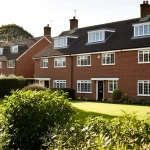Practical Energy-Saving Solutions for UK Homes
Energy efficiency is essential for cutting costs and reducing environmental impact in UK sustainable living. One of the most effective home energy saving measures is upgrading insulation. Well-insulated walls, lofts, and floors significantly reduce heat loss, keeping homes warmer and reducing heating bills. Alongside insulation, installing double glazing windows helps minimise draughts and heat escape while improving noise reduction.
Smart heating controls further enhance energy savings by adjusting temperature settings based on occupancy and time of day. Programmable thermostats or smart radiators optimise heating efficiency, avoiding unnecessary energy use.
Also to see : What are the essential tips for designing a family-friendly UK home?
Switching lighting to LED bulbs is a straightforward yet impactful improvement. LEDs consume up to 80% less energy than traditional incandescent bulbs and last longer, reducing waste and expense. Additionally, replacing older appliances with energy-efficient models rated A+++ ensures lower electricity consumption without compromising performance.
Energy-saving behaviour also plays a crucial role in home energy saving. Simple habits like turning off unused lights, unplugging devices, and mindful heating use collectively add to significant energy reductions. When combined, these practical approaches create a sustainable home environment, aligned with UK sustainable living goals and delivering consistent real-world savings.
Additional reading : How Can You Create a Tranquil Sanctuary in Your UK Home?
Integrating Sustainable Materials and Eco-Friendly Renovations
When pursuing eco-friendly home renovations, prioritizing sustainable building materials can drastically reduce a home’s environmental impact while supporting UK sustainable living. Materials such as recycled timber, reclaimed bricks, and natural insulation not only minimise waste but often offer superior durability and thermal properties compared to conventional options.
Selecting eco-certified paints, flooring, and cabinetry further enhances a home’s green credentials. These products are low in volatile organic compounds (VOCs), which improves indoor air quality and aligns with home energy saving by reducing energy needed for ventilation.
Low-carbon renovation practices focus on reducing emissions during construction and throughout a home’s lifecycle. This includes methods like prefabrication to limit waste, using local materials to cut transport energy, and designing for long-term adaptability and energy efficiency in kitchens, bathrooms, and extensions.
Incorporating these sustainable materials and practices helps to create healthier, more energy-efficient living environments. Not only do these choices contribute to individual home energy saving efforts, but they also support broader sustainability goals in the UK by reducing the carbon footprint associated with building and renovation projects.
Practical Energy-Saving Solutions for UK Homes
Energy efficiency in UK homes relies on strategic combination of insulation, double glazing, and smart heating controls. Upgrading insulation reduces heat loss effectively, cutting heating demands. Double glazing further minimizes drafts and energy escape while enhancing comfort. Smart heating controls, including programmable thermostats and smart radiators, tailor heating schedules to occupancy patterns, preventing wasted energy during unoccupied periods.
Switching lighting to LED bulbs is a powerful yet simple home energy saving step. LEDs use significantly less electricity than incandescent bulbs and last much longer, which lowers both energy bills and frequent replacements. Complementing LED upgrades by choosing energy-efficient appliances rated A+++ drives substantial electricity savings without sacrificing performance.
Day-to-day behavioural changes also play a vital role in home energy saving. How you use energy—turning off unused lights, unplugging electronics, or setting thermostats to optimal temperatures—adds noticeably to overall reductions. These habits may seem small, but when consistently applied alongside structural improvements, they maximize energy efficiency and cost savings.
Ultimately, thoughtful integration of these solutions empowers homeowners to actively reduce consumption, align with UK sustainable living goals, and enjoy lasting benefits on energy bills and environmental impact.
Practical Energy-Saving Solutions for UK Homes
Boosting energy efficiency in UK homes often begins with three proven strategies: upgrading insulation, installing double glazing, and utilising smart heating controls. Insulation works by slowing heat transfer, keeping warmth inside during colder months and reducing heating demands. Double glazing strengthens this effect by creating an air barrier that minimizes heat escape through windows, making rooms more comfortable and lowering energy consumption. Meanwhile, smart heating controls, such as programmable thermostats, adapt heating schedules to match daily routines, preventing energy waste when rooms are unoccupied.
Switching to LED lighting further enhances home energy saving. LEDs use up to 80% less electricity compared to traditional bulbs, with a longer lifespan that cuts replacement frequency. Combining this with energy-efficient appliances rated A+++ ensures lower electricity use without sacrificing functionality, accelerating overall savings.
Beyond technology upgrades, behavioural changes remain vital. Simple actions—turning off unneeded lights, unplugging devices, and optimising thermostat settings—not only reduce energy use but reinforce sustainable habits. By integrating these practical approaches, homeowners contribute meaningfully to UK sustainable living goals while enjoying tangible savings in energy bills.
Practical Energy-Saving Solutions for UK Homes
Enhancing energy efficiency in UK homes goes beyond basic upgrades by focusing on effective combination of key measures. Central to home energy saving is improving insulation, which reduces heat transfer through walls, lofts, and floors, ensuring less energy is needed to maintain warmth. Paired with this, installing double glazing windows forms a powerful barrier against heat loss. Double glazing traps air between two panes, significantly improving thermal retention compared to single glazing.
Complementing these physical upgrades, smart heating controls play a crucial role. Devices like programmable thermostats and smart radiator valves adjust heating automatically based on occupancy and external temperatures, preventing unnecessary energy consumption. This precise control achieves better home energy saving by only using heat when and where it’s needed.
Switching lighting to LED bulbs is another highly effective step. LEDs consume up to 80% less energy than incandescent bulbs and have much longer lifespans, reducing both electricity usage and replacement frequency. Moreover, choosing energy-efficient appliances rated A+++ lowers overall electricity demand without compromising performance.
Behavioural changes amplify these benefits. Simple adjustments such as turning off lights when leaving rooms, unplugging idle electronics, and setting thermostats to optimal temperatures contribute substantially to lowering energy consumption. Ultimately, combining smart technology, efficient hardware, and mindful habits drives sustained energy savings aligned with UK sustainable living ambitions.



